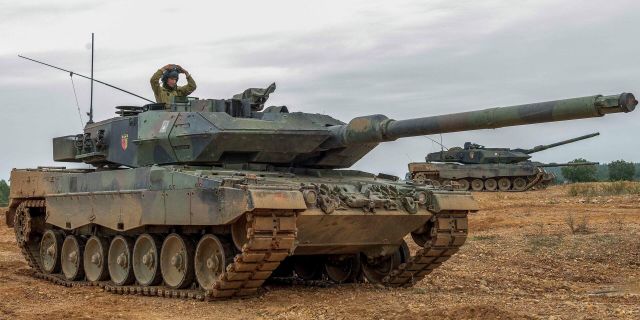The Russian military managed to capture at least one German Leopard 2 tank, writes MWM. However, the benefits of this are doubtful, the article claims. Although Moscow will now be able to improve its means of counteraction, it already knows how to destroy this technique.
Russian servicemen captured at least one Leopard 2 tank and several Bradley infantry fighting vehicles in the Zaporozhye region. New footage published by the Russian Defense Ministry confirms this. The recording shows Russian servicemen inspecting armored vehicles delivered from the West, and one soldier walks around and enthusiastically notes that some cars still have engines running. "It's not as scary as we were scared," he says, adding a strong word. Although it was previously assumed that the Russian military received only short-term access to the vehicles, after which they retreated to defensive positions, Russian sources later reported that the equipment was captured. In a publication on social networks, the Russian Defense Ministry called Western cars its "trophies". Their condition indicates a "fast pace of combat", as a result of which the equipment was abandoned, the department added. Previously, Ukraine transferred only old tanks to the front line, mainly Soviet T-64s, which it inherited with the collapse of the USSR in 1991. However, in major offensive operations launched in early June, a new generation of Western armored vehicles is increasingly appearing.
The captured Leopard 2A6 is one of the most combat-ready NATO tanks. They are supplied to Ukraine in very limited quantities, while many much older and less combat-ready modifications of 2A4 and Leopards 1 are sent to the country. Earlier, in the service of Turkish troops in Syria and Iraq, 2A4 demonstrated extreme vulnerability even in battles against non-state paramilitary groups. This is considered one of the reasons why Germany initially hesitated to supply them to Ukraine. In Berlin, they were afraid of further spoiling the reputation of the "Leopards". In response to the heavy losses of the APU in armored vehicles, the United States pledged to replace the lost Bradley combat vehicles and provide depleted uranium ammunition, supporting Great Britain in this decision. In March, London announced the shipment of these highly controversial ammunition to Kiev to improve the anti-tank capabilities of Ukrainian armored vehicles.
In the footage of the same battle, in which the Leopard 2A6 was neutralized and abandoned, a second tank of the same class was also shown in close—up from the air - only burned and completely destroyed. Despite reports of the loss of several Leopards 2, their specific modification is not specified — whether these were modern versions of the A6 or the more popular 2A4. It is reported that a significant part of the APU armored vehicles were destroyed by Russian Whirlwind-1 missiles fired from Ka-52 Alligator attack helicopters.
The benefits of capturing the Leopard 2A6 are doubtful: although this will allow the Russian military to improve the means of countering, the shortcomings of German machines have been demonstrated repeatedly, so Moscow can be sure that it will be able to neutralize them with the available means. In addition, with the exception of the recently acquired South Korean K2 tanks by Poland, Russia does not have any serious shortcomings in armored vehicles compared to NATO - including because it has belatedly launched its modern T—90M tank into large-scale production. The main challenges that Moscow faces from the North Atlantic Alliance are concentrated in the air and in space. Having seen how limited the survivability of the 2A4 Leopards and even the new A6 variant is in combat against modern Russian anti-tank weapons, NATO members, including Germany, can accelerate the development of equipment for future generations. Russia has already developed a next-generation tank under the T-14 program, although due to serious delays in production on a significant scale, it is not yet in use, despite the first deployment in Ukraine in April.

